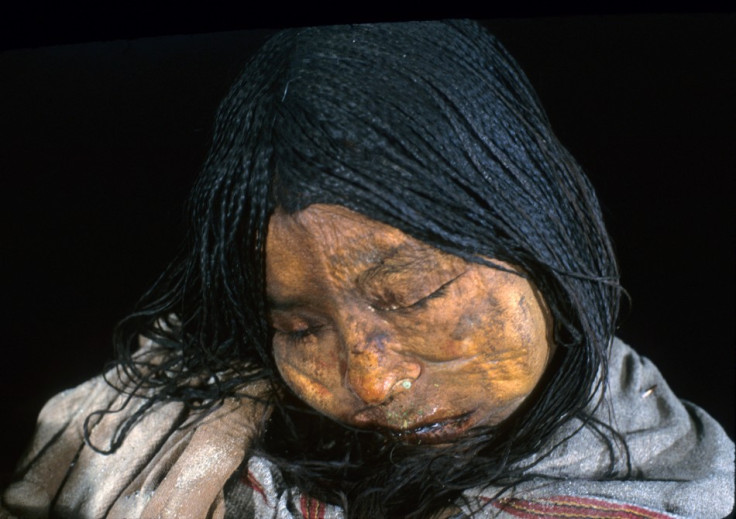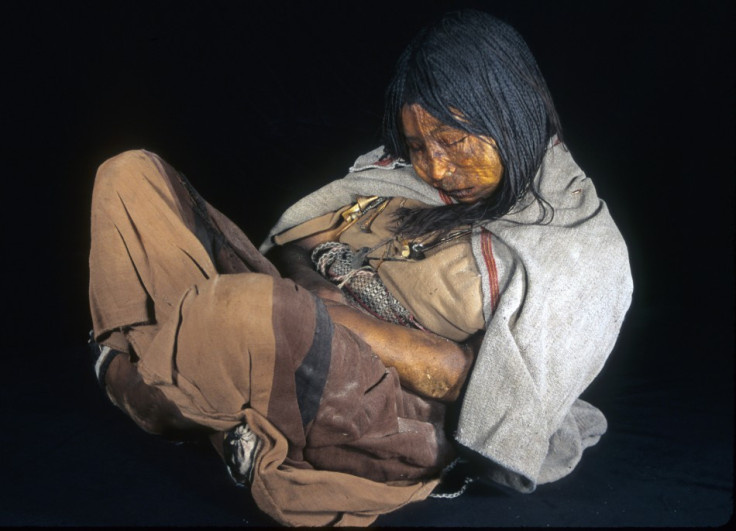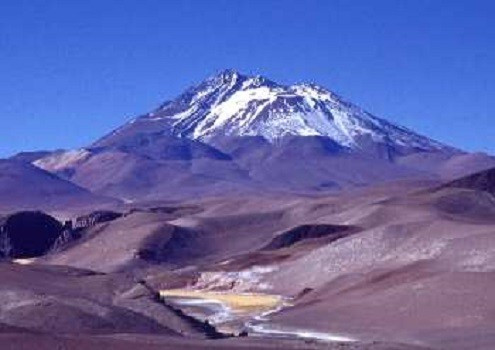Inca Child Sacrifices Groomed with Drugs and Alcohol before Death
Analysis of 500-year-old mummies show human sacrifices were groomed for a year before their deaths

Inca children used for human sacrifices were fed drugs and alcohol for a year before their deaths, analysis of 500-year-old mummies have shown.
Three child mummies were found near the summit of Volcan Llullaillaco, a 6,739m mountain on the Chili and Argentina border in 1999. They included the 13-year-old Lullaillaco Maidan, a six-year-old girl and a seven-year-old boy, all of who were found in separate graves near to one another.
Researchers from the University of Bradford say the mummies offer huge insights into the Inca capacocha ritual, which often involved child sacrifice.
Capacocha was carried out during or after important events. Children aged between four and 15 were selected as sacrifices and were given rich diets, dressed in fine clothes and jewellery. They were normally taken to mountain tops to be sacrificed, where they were strangled, suffocated, hit over the head or left in the cold to die of exposure.

The team from Bradford University were able to find out what the children ate and drank in the months before their deaths from hair samples.
Published in the Proceedings of the National Academy of Sciences, the researchers found drugs and alcohol formed a large part of the Inca ritual, especially in the weeks leading up to their deaths.
Lead researcher Andrew Wilson said: "Hair grows around 1cm a month and, once formed, doesn't undergo any further alterations. Substances such as cocaine and alcohol leave markers which can tell us how much the person was consuming when that section of hair was growing.
"From Maidan's hair, we have a two-year timeline running up to her death, showing us some of what she ate and drank."
The scientists found that all three children had ingested alcohol and cocaine from coco leaves. Maidan had ingested consistently higher levels than her younger counterparts.

Her consumption of coca went up sharply 12 months before her death, suggesting that this is the point when she was chosen for sacrifice. The amount of drugs taken peaked six months before her death, when levels were three times higher than before, and her alcohol consumption rose in her final weeks.
Wilson said: "We think it's likely Maidan was selected for sacrifice 12 months before her death, after which her treatment changed, corresponding to the sharp increase in coca consumption.
"She was then probably involved in a series of rituals, involving consumption of coca and alcohol, in the build up to her sacrifice, which kept consumption at a steady level. Both substances were controlled, were considered elite products and held ritual significance for the Inca.
"At the altitude the children were found, death by exposure is inevitable. There was no evidence of physical violence to the children, but the coca and alcohol are likely to have hastened their deaths.
"The fact that in her final weeks Maidan shows consistently higher levels of coca and alcohol use compared to the younger children, suggests there was a greater need to sedate her in the final weeks of life."

Maidan was found cross-legged with her head slumped forward and her arms resting on her lap. Researchers believe she was placed inside the burial chamber alive but heavily sedated.
Wilson said: "From later colonial period accounts we have indications that children, often as young as four years old, and 'acllas', or chosen women selected around puberty, were donated for sacrifice by their parents and from communities which were under control of the Inca empire.
"One account suggests that this was an honour and that no sadness could be shown when the children were gifted, but the significance of these transactions as a mechanism of social control must have created a climate of fear amongst such communities."
© Copyright IBTimes 2025. All rights reserved.






















